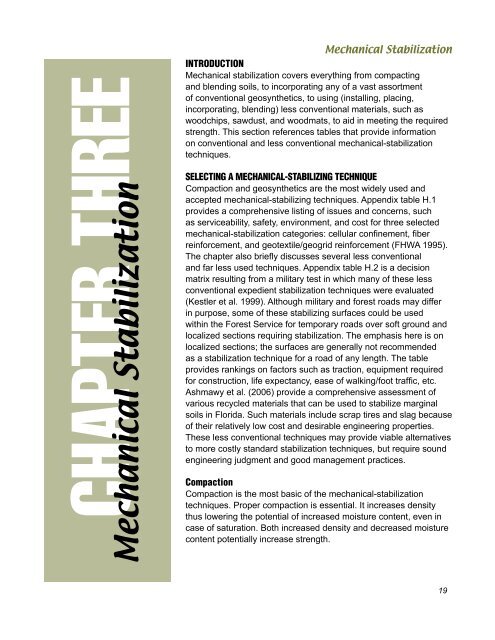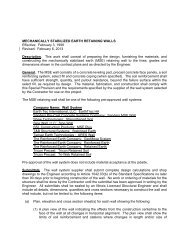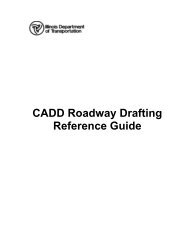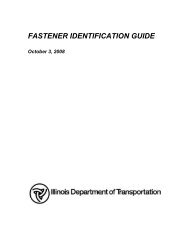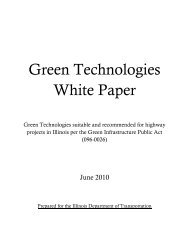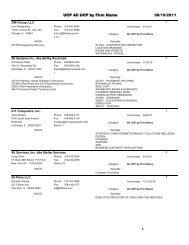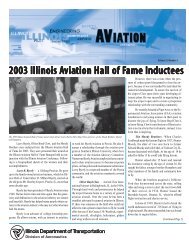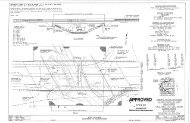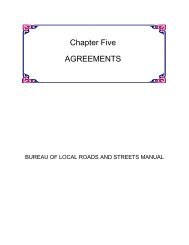Stabilization Selection Guide for Aggregate - Illinois Department of ...
Stabilization Selection Guide for Aggregate - Illinois Department of ...
Stabilization Selection Guide for Aggregate - Illinois Department of ...
You also want an ePaper? Increase the reach of your titles
YUMPU automatically turns print PDFs into web optimized ePapers that Google loves.
CHAPTER THREE<br />
Mechanical <strong>Stabilization</strong><br />
Mechanical <strong>Stabilization</strong><br />
INTROdUCTION<br />
Mechanical stabilization covers everything from compacting<br />
and blending soils, to incorporating any <strong>of</strong> a vast assortment<br />
<strong>of</strong> conventional geosynthetics, to using (installing, placing,<br />
incorporating, blending) less conventional materials, such as<br />
woodchips, sawdust, and woodmats, to aid in meeting the required<br />
strength. This section references tables that provide in<strong>for</strong>mation<br />
on conventional and less conventional mechanical-stabilization<br />
techniques.<br />
SELECTING A MECHANICAL-STABILIZING TECHNIqUE<br />
Compaction and geosynthetics are the most widely used and<br />
accepted mechanical-stabilizing techniques. Appendix table H.1<br />
provides a comprehensive listing <strong>of</strong> issues and concerns, such<br />
as serviceability, safety, environment, and cost <strong>for</strong> three selected<br />
mechanical-stabilization categories: cellular confinement, fiber<br />
rein<strong>for</strong>cement, and geotextile/geogrid rein<strong>for</strong>cement (FHWA 1995).<br />
The chapter also briefly discusses several less conventional<br />
and far less used techniques. Appendix table H.2 is a decision<br />
matrix resulting from a military test in which many <strong>of</strong> these less<br />
conventional expedient stabilization techniques were evaluated<br />
(Kestler et al. 1999). Although military and <strong>for</strong>est roads may differ<br />
in purpose, some <strong>of</strong> these stabilizing surfaces could be used<br />
within the Forest Service <strong>for</strong> temporary roads over s<strong>of</strong>t ground and<br />
localized sections requiring stabilization. The emphasis here is on<br />
localized sections; the surfaces are generally not recommended<br />
as a stabilization technique <strong>for</strong> a road <strong>of</strong> any length. The table<br />
provides rankings on factors such as traction, equipment required<br />
<strong>for</strong> construction, life expectancy, ease <strong>of</strong> walking/foot traffic, etc.<br />
Ashmawy et al. (2006) provide a comprehensive assessment <strong>of</strong><br />
various recycled materials that can be used to stabilize marginal<br />
soils in Florida. Such materials include scrap tires and slag because<br />
<strong>of</strong> their relatively low cost and desirable engineering properties.<br />
These less conventional techniques may provide viable alternatives<br />
to more costly standard stabilization techniques, but require sound<br />
engineering judgment and good management practices.<br />
Compaction<br />
Compaction is the most basic <strong>of</strong> the mechanical-stabilization<br />
techniques. Proper compaction is essential. It increases density<br />
thus lowering the potential <strong>of</strong> increased moisture content, even in<br />
case <strong>of</strong> saturation. Both increased density and decreased moisture<br />
content potentially increase strength.<br />
19


